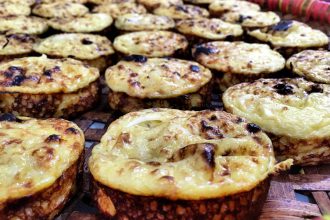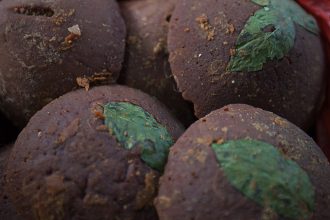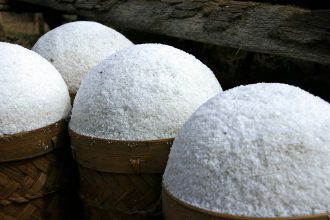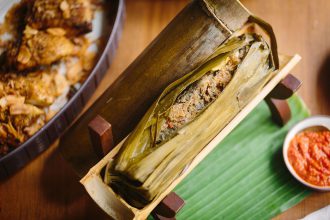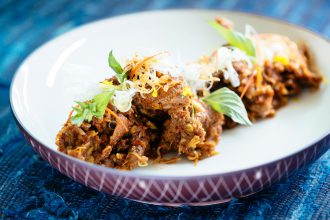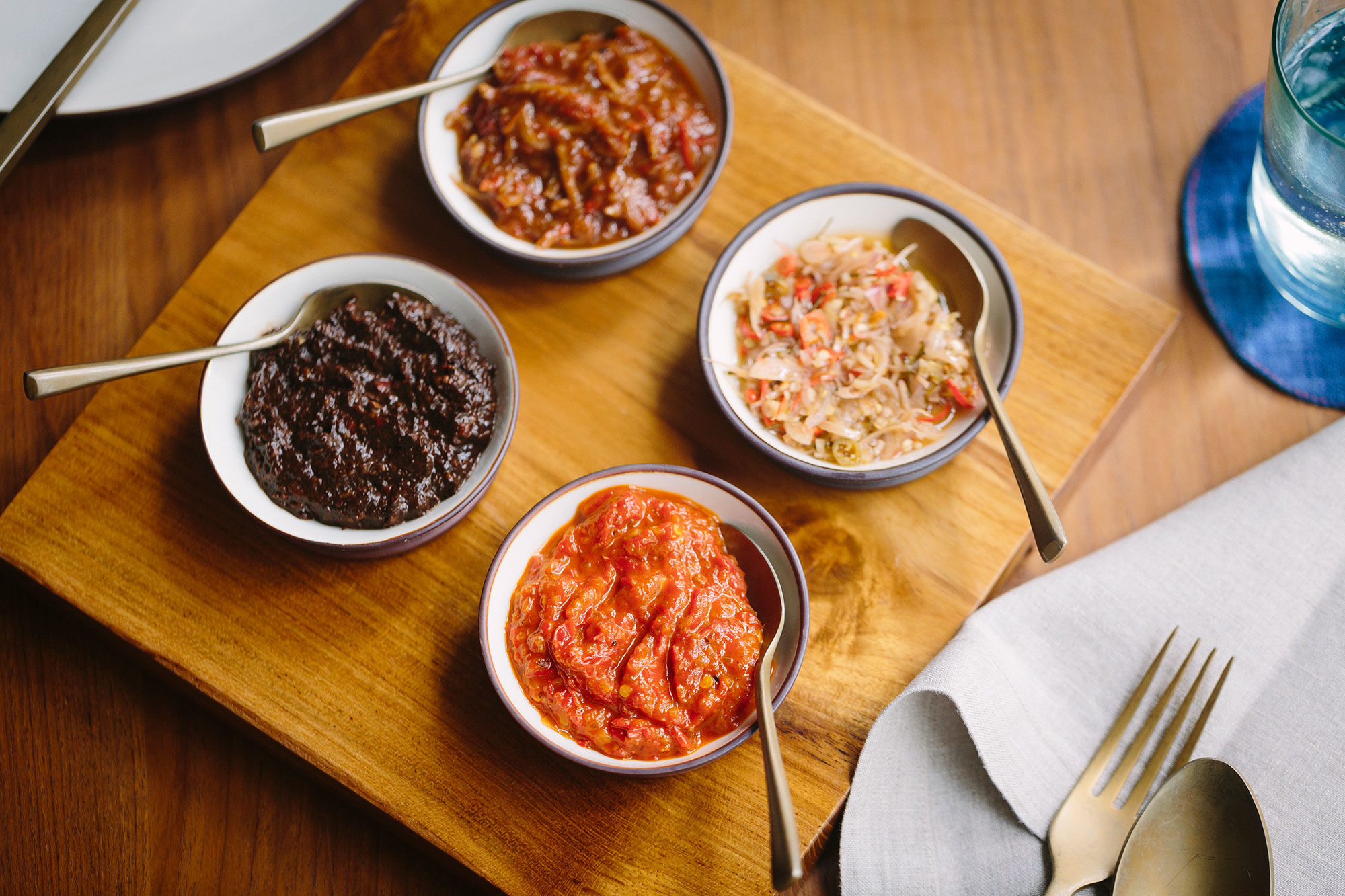
Chilli relish (sambal) is an imperative Indonesian condiment, served with almost every Indonesian dish. It arouses the appetite, ignites the senses, and complements the taste.
The main ingredient of sambal is chilli pepper (Capsicum annuum), a species of plant native to southern North America and northern South America. But of course, Indonesia has numerous local varieties, such as bird’s eye chillies, red chillies, green chillies, Toraja katokkon chillies (Capsicum annuum L var sinensis), and many more.
Making sambal requires great craftsmanship. It is a skill that one should master wholeheartedly. It not only involves slicing, but, even more so, a manual grinding technique using a flat stone mortar and pestle. Understanding each ingredient’s characteristics and creating a conspicuously fierce tasting note requires continuous practice. On top of all this, one must master how to combine the sambal ingredients to create a fulfilling consistency of texture each time.
Making sambal also involves creativity in blending locally available ingredients. Each person has his or her own personal recipe and the taste depends on the person who manually grinds it. Sambal is very personal, made only for non-conformists. That is the most important lesson we learned during our sambal discovery throughout the Indonesian archipelago. Myself and Chef Antoine believe that many Indonesians have remarkable sambal cooking techniques, unique to each particular region. We see it as our shared responsibility to showcase the diversity of Indonesian sambal techniques at Kaum, starting by introducing other cooking techniques used to prepare sambal – steaming, sautéing, and fermentation.
Sambal can be enjoyed with every dish and different sambals can be paired with particular dishes. To name a few:
Sambal Soto:
This is a classic Indonesian sambal. It consists only of garlic, red chilli peppers, salt, and sugar. In some rural areas in Indonesia, locals make sambal their primary supplement, usually by adding steamed rice and deep-fried salt fish to the dish – a very simple yet rustic Indonesian way to enjoy food. You can also add this basic sambal into soup dishes, to bring out a distinctive flavour.
Sambal Matah:
Other than manual grinding using a pestle and mortar, the Balinese also recognise how to texturize their sambals using a slicing technique where all of the ingredients are served fresh, thinly chopped, and simmered in boiling coconut oil. This kind of sambal is called sambal matah.
Perfect for grilled fish, chicken, or even oyster mushrooms, sambal matah contains palate-stimulating bird’s eye chillies, mixed with scented lemongrass, torch ginger flower, flavoursome shallots, and coconut oil to evoke a tropical flavour.
Sambal Kecap:
This type of sambal is created by mixing Indonesian sweet soy sauce with freshly cut tomatoes, shallots, and red chillies. This sweet soy sauce was influenced by Chinese immigrants who tried to mimic the production of soy sauce but with added locally grown products found in Indonesia, such as palm sugar, herbs and spices. In some regions, such as in North Sumatra, torch ginger flower (Etlingera elatior) is thinly sliced and added into the sweet soy sauce, adding a lemon and ginger aroma to cut through the sweetness of the sauce.
Sambal kecap is perfect for deep fried dishes, such as fish, tofu, tempe, and even pork satay.
Sambal Tempoyak:
Tempoyak is made by fermenting durian with salt. The tasting note of tempoyak should be slightly sour but not too acidic. Usually it takes three to five days fermentation in a clean jar for the pungent aroma of fresh durian to slowly reduce. Then, with a bit of creativity to develop a more palatable dish, shallots, garlic, bird’s eye chillies, and a dash of sugar are added into the tempoyak, and the sambal tempoyak is ready to serve.
Tempoyak is commonly known in Sumatra, such as in Bengkulu, Lampung, Palembang, where many Melayu ethnic tribes live. Dayak tribes in Kalimantan know this fermentation technique as well and enjoy sambal tempoyak with fresh water fish.
Durian selection plays a crucial part in creating the perfect tempoyak. Fruit which is too watery or too sweet will not do; only a perfectly ripe durian is suitable for making a striking and bold sambal tempoyak.
Sambal Kluwek:
Kluwek/kepayang (Pangium edule) is an inimitable ingredient which is easily found in most islands in Indonesia. The tree requires many years to mature, thus there is not much commercial cultivation of kluwek in Indonesia; most is grown wild. Due to its black colour and round shape after the fermentation process, kluwek kernel is popularly called “black nut”. It is a poisonous fruit which can be made edible by boiling the seeds and then burying them in ash to allow a fermentation process for almost thirty to forty days, during which time, they turn from a creamy white colour to dark brown or black.
The fresh fruit or seeds are often used to naturally drug fresh water fish by several ethnic tribes in Sumatra. By letting fish consume these fruits, they are easier to catch with almost no side effects to the people who consume them later.
Preparing sambal kluwek requires expertise in picking the suitable kluwek kernels, otherwise they will produce a bitter aftertaste. The kernels are manually ground up to form a thick black paste with chillies, shallots, sand ginger, tamarind, and salt to taste.
CONTINUE THE JOURNEY
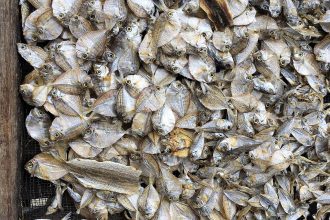
For many Indonesians, salted fish is one of life’s simple pleasures. We are perfectly content enjoying steamed rice, salted fish and a fiery sambal (chilli relish), devouring all with our right hand. Happiness is purely simple for most Indonesians!
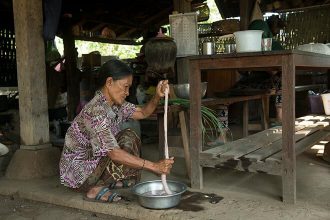
Singaraja totally captivates us…”
Lisa Virgiano is brimming with enthusiasm for the local produce she and the Kaum culinary collective have discovered in Bali’s oldest port.
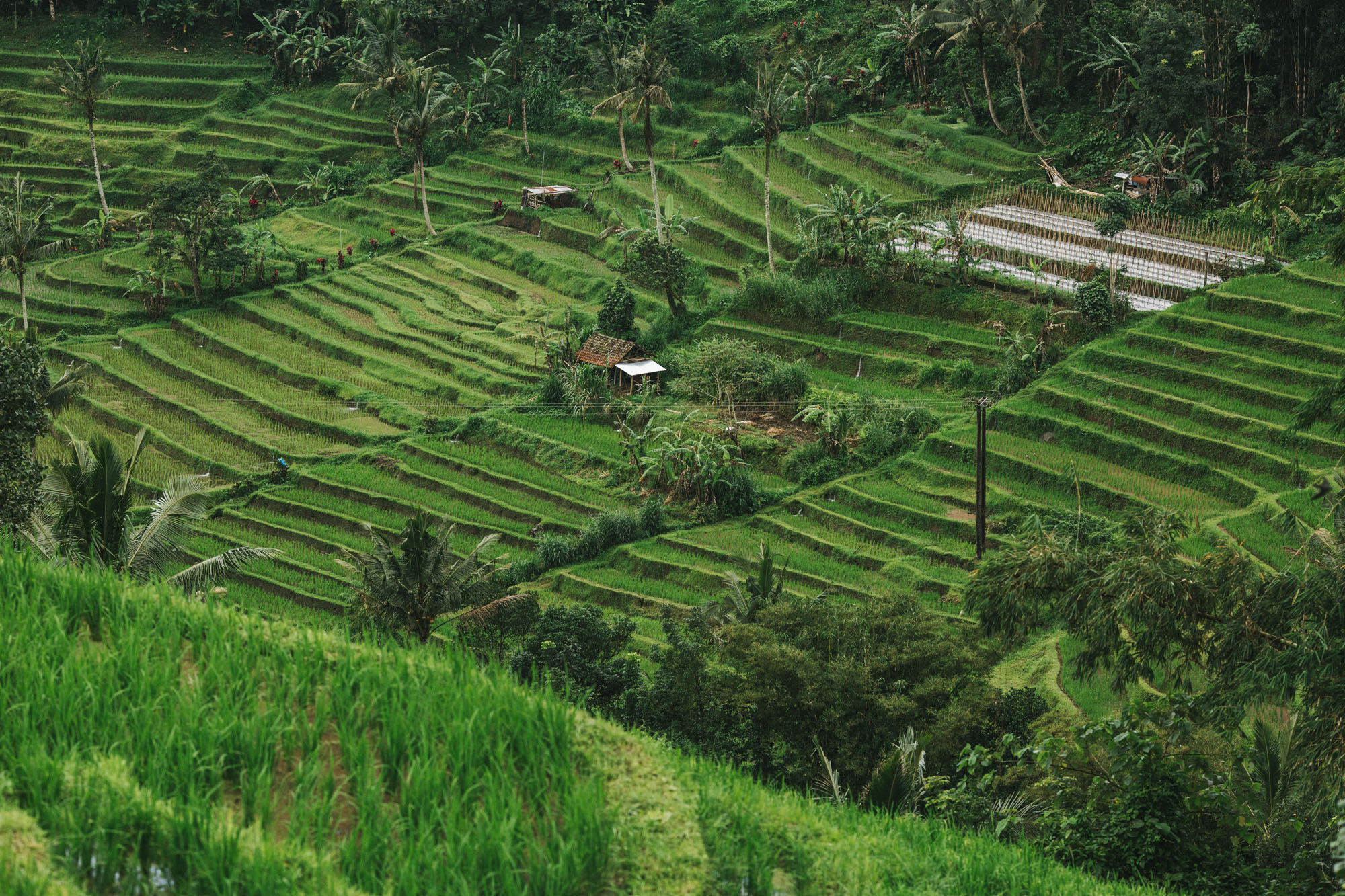
Rice is an essential commodity in Indonesia. Nowadays, most Indonesians think of rice not only as an indispensible component to any meal, but also as a kind of “sacred” staple. But has this forever been the case? Have Indonesians always consumed rice as part of their daily diet?
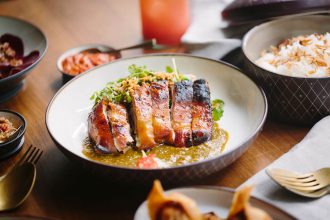
Bali has been part of the Asian trading network since the 15th century. Traders from Java brought rice and salt which could later be exchanged for cash crops, including pepper from Sumatra, spices from the Moluccas, and cotton from Bali.
